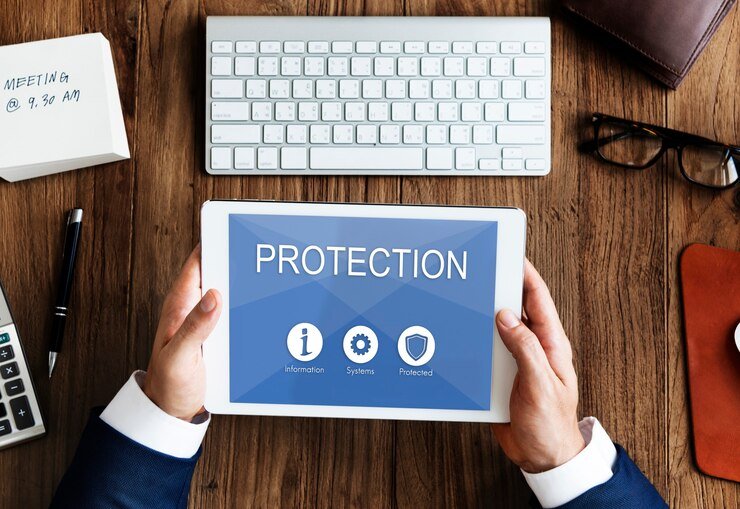
Introduction to Blacklist Checks
In today’s digital world, keeping your online presence secure is more crucial than ever. Whether you run a personal blog or manage a corporate website, the threat of being blacklisted looms large. A blacklist check can be your first line of defense against potential harm to your reputation and visibility. But what exactly does that mean? Picture this: Your site gets flagged as unsafe without any warning, leaving visitors wary and search engines scrambling to protect users from perceived threats. It’s time to take control of your online security with proactive measures like regular blacklist checks. Let’s dive into why they matter and how you can safeguard your digital footprint effectively!
The Importance of Online Security
Online security has become a crucial aspect of digital life. With the rise of cyber threats, safeguarding personal and business information is more important than ever.
Every click can open the door to potential risks. Hackers continuously develop new strategies to exploit vulnerabilities, targeting both individuals and companies alike.
Data breaches can lead to financial loss, identity theft, and erosion of trust. The impact is not just immediate; it can have long-lasting effects on reputation.
Additionally, securing your online presence helps maintain compliance with various regulations that protect user data. Failing to secure sensitive information may result in legal repercussions.
Investing in robust online security measures creates a safer browsing experience for everyone involved. It fosters confidence among users and reinforces the integrity of your brand in an increasingly interconnected world.
What is a Blacklist?
A blacklist is a list of entities, such as websites or email addresses, that have been flagged for suspicious or malicious activity. These lists are used by various organizations and service providers to enhance security measures.
When a website appears on a blacklist, it often indicates that it’s been associated with spam, malware distribution, or phishing attempts. This can lead to serious repercussions for the site’s reputation and functionality.
There are different types of blacklists maintained by search engines, email providers, and cybersecurity firms. Each has its criteria for listing an entity based on observed behavior.
Being included in any blacklist can significantly hinder online visibility. It’s crucial to understand what blacklisting entails to navigate the digital landscape effectively and safeguard your online presence.
Why Should You Use a Blacklist Check?
Using a blacklist check is essential for maintaining your online credibility. When your website or IP address appears on a blacklist, it can affect everything from email deliverability to search engine rankings.
A quick check can save you from being flagged as untrustworthy. This proactive step helps ensure that customers and clients feel secure when interacting with your site.
Moreover, regular checks allow you to identify potential security breaches early. If malicious activity has occurred, knowing about it promptly lets you take action before significant damage is done.
Additionally, staying off blacklists contributes to better overall performance in digital marketing efforts. A clean reputation fosters trust and enhances engagement rates with users who visit your site.
Investing time in a blacklist check pays dividends in the long run by safeguarding both your brand and its assets.
How to Perform a Blacklist Check on Your Website
Performing a blacklist check on your website is straightforward and essential for maintaining online health. Start by using reputable tools designed for this purpose. Some popular options include MXToolbox, SiteCheck, and Google Safe Browsing.
Simply input your domain name into the search bar of these tools. They will scan various blacklists to see if your site has been flagged.
After initiating the scan, review the results carefully. If you find that your site is blacklisted, it’s crucial to identify which specific lists have flagged you.
Document any issues reported by these services. This information will guide you in addressing potential problems affecting your reputation online. Regular checks can save you from unexpected downtimes and traffic losses due to being on a blacklist.
Top Tools for Blacklist Checking
When it comes to blacklist check, having the right tools at your disposal makes all the difference. Several reliable platforms can help you monitor your online reputation effectively.
One popular tool is MXToolbox. It allows users to check their domain and IP address against multiple blacklists simultaneously. This can save valuable time while ensuring thorough coverage.
Another great option is Google Safe Browsing. By using this service, you can see if your site has been flagged for suspicious activity by Google, a crucial indicator of potential problems.
For those looking for a more comprehensive solution, Sucuri SiteCheck offers an in-depth scan that checks for malware and blacklist status across various databases.
Spamhaus provides detailed information about spam-related activities connected to your address or domain. These tools empower website owners to maintain a clean slate in the digital landscape.
Steps to Take If Your Website is Blacklisted
Discovering that your website has been blacklisted can be alarming. The first step is to identify the reason behind the blacklisting. This often involves reviewing security reports or messages from monitoring tools.
Next, conduct a thorough audit of your site. Look for malware, spammy content, or vulnerabilities that could have triggered the blacklist status. Cleaning up these issues is essential.
Once you’ve rectified any problems, it’s time to submit a reconsideration request to the blacklist provider. Provide clear evidence that you’ve resolved previous issues and highlight steps taken to enhance security.
Stay vigilant after this process by continually monitoring your website’s status through regular checks using reliable tools. This proactive approach will help prevent future incidences and ensure ongoing online safety.
Prevention Tips for Staying off the Blacklist
Maintaining a strong online presence requires vigilance. Regularly update your website’s software and plugins to patch vulnerabilities.
Implement robust security measures like firewalls and intrusion detection systems. These tools can deter potential attacks before they escalate.
Monitor user activity on your site. Keeping an eye on unusual behavior helps catch issues early, reducing the risk of being flagged.
Educate your team about phishing attempts and malware risks. Awareness is crucial in preventing accidental breaches that could lead to blacklisting.
Ensure you’re following best practices for email marketing. Avoid spamming users, as this can quickly land you on a blacklist without warning.
Types of Blacklists
Blacklists can vary based on the criteria they use to categorize entities. Understanding these types helps in navigating online security effectively.
One common type is email blacklists, which target domains or IP addresses sending spam. Being listed here can disrupt communication and affect business credibility.
Another form includes website blacklists, often maintained by search engines like Google. These lists flag sites for malicious content or deceptive practices, impacting visibility and traffic significantly.
IP address blacklists focus on specific internet protocol addresses known for harmful activities. This can hinder access to various services for users associated with those IPs.
Additionally, there are application-specific blacklists that restrict access within certain networks due to prior abuse or policy violations. Each of these plays a crucial role in maintaining the integrity of online interactions and environments.
Dangers of Being on a Blacklist
Being on a blacklist can lead to severe consequences for your online presence. One major danger is the loss of credibility. Visitors may see warnings or error messages, which deter them from trusting your site.
Additionally, blacklisted websites often experience significant drops in traffic. Search engines and email providers may block access, causing potential customers to miss out completely.
The impact doesn’t stop at visibility; it can damage relationships with partners and affiliates. They might hesitate to associate with a site deemed unsafe.
Moreover, recovering from a blacklist can be a lengthy process filled with frustration. It requires time-consuming audits and remedial actions that distract from core business activities.
Being blacklisted can affect revenue streams dramatically as sales decline due to these factors. The ripple effects are far-reaching and challenging to navigate without proactive measures.
Tips for Avoiding Blacklisting
Maintaining a good online reputation is essential. To avoid blacklisting, ensure your website follows best practices for security and compliance.
Regularly update software and plugins. Outdated systems can be vulnerable to attacks that lead to blacklisting.
Implement strict email policies. Use double opt-in methods for subscriptions and monitor outgoing emails for spammy content.
Create valuable, original content. Search engines prioritize quality over quantity. Plagiarized or poorly written material can raise red flags.
Engage with your audience responsibly on social media platforms. Avoid spamming followers or sharing misleading information.
Conduct regular audits of your site’s SEO health. Keeping an eye on performance will help spot potential issues before they escalate into bigger problems that could jeopardize your standing online.
Benefits of Regularly Checking for Blacklists
Regularly checking for blacklists can significantly enhance your online security. It allows you to identify potential threats before they escalate. When you stay ahead of these issues, you can take proactive measures to protect your assets.
By conducting frequent blacklist checks, you maintain a healthy reputation in the digital space. A clean status fosters trust among your users and clients. This is especially important for businesses reliant on customer interaction.
Moreover, consistent monitoring helps pinpoint vulnerabilities within your system. You gain insights into why listings may occur and how to address them effectively. Understanding these factors empowers website owners with knowledge to strengthen their defenses.
Regular checks keep SEO performance intact. Search engines prioritize sites that are not flagged as suspicious or harmful. Protecting yourself from being blacklisted ultimately supports long-term growth and visibility in search results.
Conclusion: Protecting Your Online Reputation
Maintaining a strong online presence is essential for businesses and individuals alike. Regularly conducting a blacklist check can help you identify potential threats to your website’s reputation before they escalate into serious issues. By understanding the various types of blacklists, their dangers, and how to avoid them, you empower yourself with knowledge that protects your digital footprint.
The benefits of staying proactive in checking for blacklisting cannot be overstated. Not only does it safeguard your website from harmful attacks, but it also ensures trust among users and search engines. A clean slate enhances credibility and fosters growth in an increasingly competitive landscape.
Investing time in monitoring your online status pays off by keeping your brand image intact. So take charge today—implement regular blacklist checks as part of your comprehensive online security strategy. Your reputation deserves nothing less than protection from hidden risks lurking on the web.
RELATED POSTS
View all


